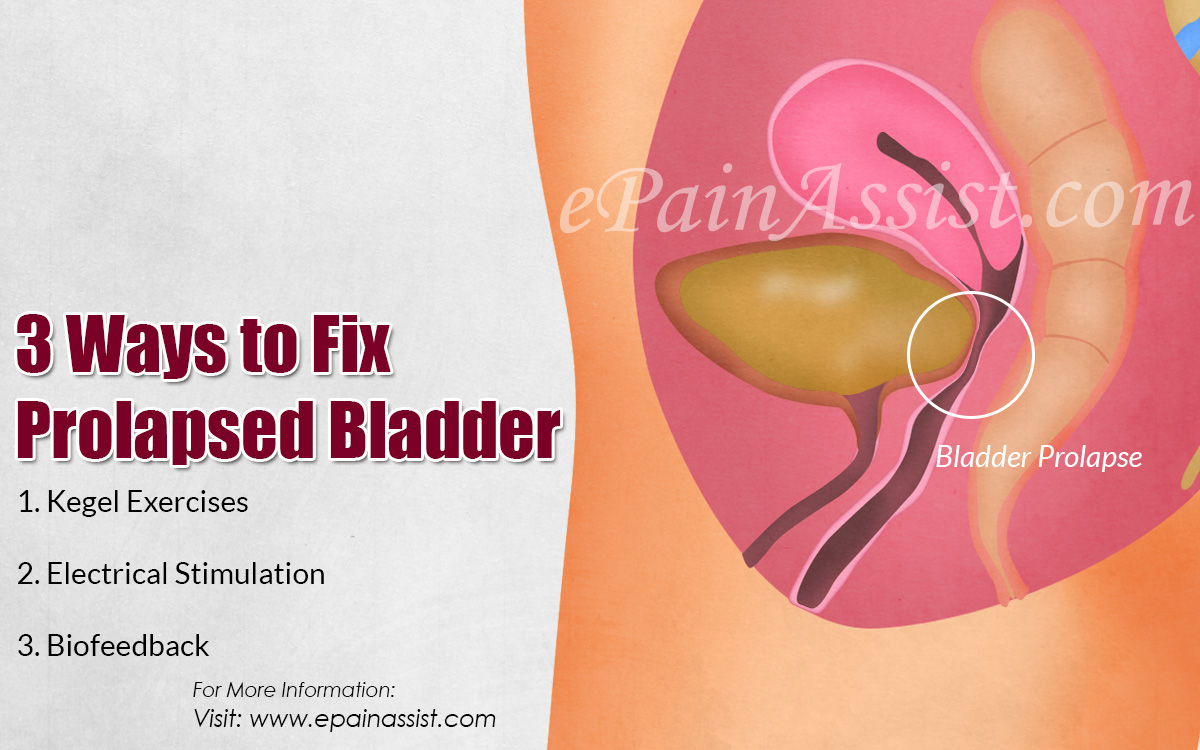What Do We Mean By Prolapsed Bladder?
Prolapsed Bladder is a condition which only occurs in females which is characterized by drooping of the bladder down towards the vagina. The bladder in females is supported by the vaginal wall and the pelvic floor muscles. With age and extreme stress such as during childbirth the vaginal wall becomes weak and loose and thus is not able to support the bladder anymore. This results in the bladder slowly starting to go downward towards the vagina. This is what is termed as a Bladder Prolapse.
Certain strenuous activities like repetitive heavy lifting either at work or at home may also lead to Bladder Prolapse. This condition is seen mostly in postmenopausal females. This is because females of reproductive age produce a hormone called estrogen which helps in keeping the vaginal wall strong.
Once a female reaches menopause, they stop producing estrogen and this further weakens the vaginal wall which ultimately results in Bladder Prolapse. This condition is divided into four categories namely mild, moderate, severe, and complete bladder prolapse. While the first two categories require minimal treatment, the latter two require intense interventions and even surgery to reposition the bladder back into its normal position.
Once the bladder is repositioned back into its place, the next step is to strengthen the vaginal wall and the pelvic floor muscles. This is to prevent any recurrence of a Bladder Prolapse. This is sometimes done by adding material like a mesh to the vaginal wall at the time of surgery to support the weak vaginal wall but the efficacy of this is questioned and its risk far outweigh the benefit and hence is not a recommended strategy. This is where physical therapy comes into picture. Physical therapy plays an important part in strengthening the vaginal wall and pelvic floor muscles so as to prevent any recurrence of a Bladder Prolapse.

3 Ways to Fix Prolapsed Bladder
Once an individual undergoes surgery for Bladder Prolapse and the wounds have healed, she is sent to physical therapy for strengthening of the vaginal wall and pelvic floor muscles.
Kegel Exercises To Fix Prolapsed Bladder: To strengthen the pelvic floor muscles, Kegel exercises need to be done diligently and correctly. These exercises contract the pelvic floor muscles thus making them strong. Kegel exercises involve contracting the pelvic muscles as if an individual is trying to hold urine and trying not to urinate. In the beginning, it may not be possible to contract for more than a few seconds and more repetitions need to be done.
After practicing for few days, the individual may be able to contract the pelvic floor muscles for more time as the muscles strengthen. As and when the muscles start to regain strength, the timing of the contractions needs to be increased to make them stronger. One can increase the contractions for up to 10 seconds and then after a break of about 5 or 6 seconds repeat the process.
It is preferable to do kegel exercise in the sets of 10 for best effectiveness. This is quite an easy exercise to do and can be done anywhere, at home or at work. It takes usually 10 weeks of diligent Kegel exercises to notice an improvement in the strength of the pelvic floor muscles.
Electrical Stimulation: This is yet another method employed by physical therapists to strengthen the pelvic floor muscles. This procedure involves application of a probe on the muscles of the pelvic floor and the vaginal wall. The probe is then attached to a device which sends small electrical current to the muscles which then contract. These contractions caused by the electrical currents strengthen the pelvic floor and vaginal wall muscles.
Biofeedback: This is a process in which a sensor is used to monitor the activity of muscle contractions in the pelvic floor and the vaginal wall. Based on the readings of the sensor, specific exercises are given to the patient to strengthen the muscles. Biofeedback is a very effective way in relieving the symptoms of a Bladder Prolapse.
Also Read:
